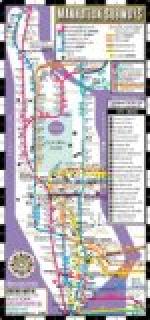The compressed air is supplied by six air compressors, one located at each of the following sub-stations: Nos. 11, 12, 13, 14, 16, and 17. Three of these are reserve compressors. They are motor-driven by direct-current motors, taking current from the direct-current buss bars at sub-stations at from 400 to 700 volts. The capacity of each compressor is 230 cubic feet.
[Illustration: MAIN LINE, PIPING AND WIRING FOR BLOCK AND INTERLOCKING SYSTEM, SHOWING JUNCTION BOX ON COLUMN]
The motor-driven air compressors are controlled by a governor which responds to a variation of air pressure of five pounds or less. When the pressure has reached a predetermined point the machine is stopped and the supply of cooling water shut off. When the pressure has fallen a given amount, the machine is started light, and when at full speed the load is thrown on and the cooling water circulation reestablished. Oiling of cylinders and bearings is automatic, being supplied only while the machines are running.
Two novel safety devices having to do especially with the signaling may be here described. The first is an emergency train stop. It is designed to place in the hands of station attendants, or others, the emergency control of signals. The protection afforded is similar in principle to the emergency brake handle found in all passenger cars, but operates to warn all trains of an extraneous danger condition. It has been shown in electric railroading that an accident to apparatus, perhaps of slight moment, may cause an unreasoning panic, on account of which passengers may wander on adjoining tracks in face of approaching trains. To provide as perfectly as practicable for such conditions, it has been arranged to loop the control of signals into an emergency box set in a conspicuous position in each station platform. The pushing of a button on this box, similar to that of the fire-alarm signal, will set all signals immediately adjacent to stations in the face of trains approaching, so that all traffic may be stopped until the danger condition is removed.
The second safety appliance is the “section break” protection. This consists of a special emergency signal placed in advance of each separate section of the third rail; that is, at points where trains move from a section fed by one sub-station to that fed by another. Under such conditions the contact shoes of the train temporarily span the break in the third rail. In case of a serious overload or ground on one section, the train-wiring would momentarily act as a feeder for the section, and thus possibly blow the train fuses and cause delay. In order, therefore, to prevent trains passing into a dangerously overloaded section, an overload relay has been installed at each section break to set a “stop” signal in the face of an approaching train, which holds the train until the abnormal condition is removed.
[Illustration: THREE METHODS OF BLOCK SIGNALING]




